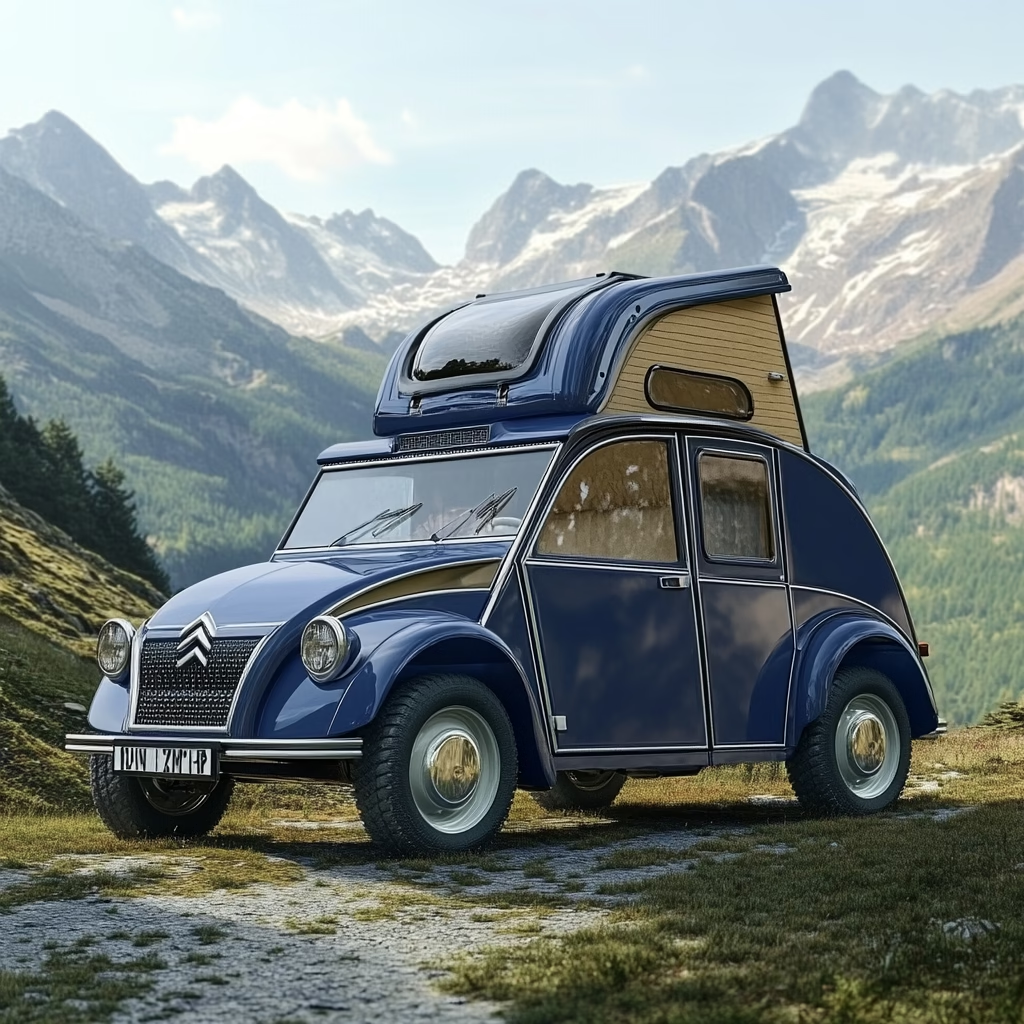The humble Citroën 2CV might not be the first vehicle that comes to mind when thinking about camper vans, but this iconic French automobile has developed a devoted following in the world of compact camping. With its distinctive silhouette, remarkable durability, and surprising adaptability, the Citroën 2CV Camper represents a unique intersection of automotive history and outdoor adventure. This article explores the fascinating world of 2CV camper conversions, their history, appeal, and why they continue to capture the imagination of camping enthusiasts around the world.
The Origins of the Citroën 2CV
Before diving into its camping credentials, it’s worth understanding what makes the 2CV such a special vehicle. Launched in 1948, the Citroën 2CV (deux chevaux-vapeur, referring to its tax horsepower rating) was designed to motorize post-war France’s rural population. The brief was ambitious yet straightforward: create a vehicle that could transport two farmers and 50kg of farm goods to market at 60km/h, use minimal fuel, and navigate rough country roads while protecting eggs transported in a basket.
The result was an exercise in ingenious minimalism. The 2CV featured:
- A simple air-cooled two-cylinder engine
- Innovative interconnected suspension that could handle the roughest rural tracks
- A canvas roof that could be rolled back for oversized cargo
- Removable seats that could serve as picnic chairs
- A bare-bones approach to luxury (early models even lacked a fuel gauge)
This stripped-back design philosophy inadvertently created the perfect platform for camping conversions. The 2CV was lightweight, efficient, mechanically simple, and remarkably spacious for its external dimensions—all valuable qualities for a compact camper.
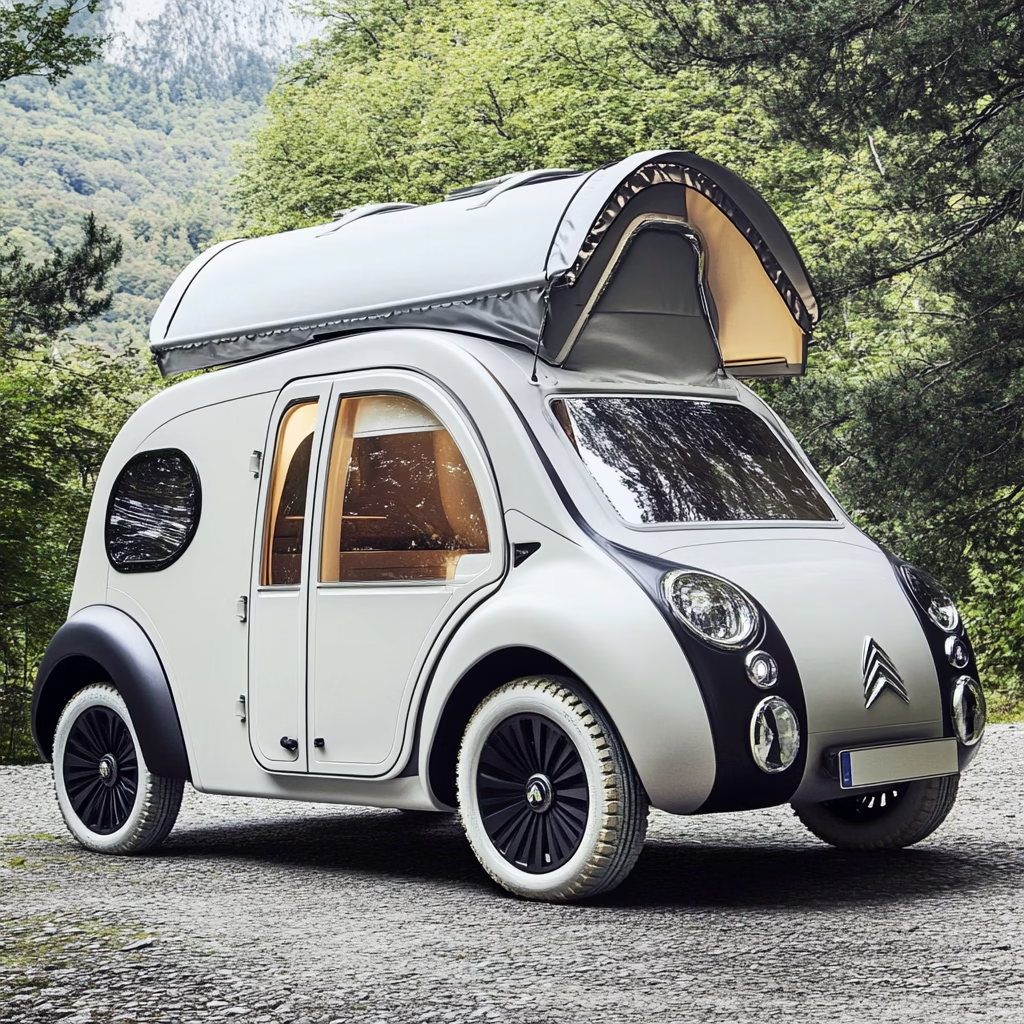
The Birth of the 2CV Camper Movement
The transformation of the 2CV into a camping vehicle wasn’t part of Citroën’s original plan. Rather, it emerged organically through the creativity of 2CV owners and specialized conversion companies. The earliest 2CV camper adaptations appeared in the 1950s and 1960s as Europeans embraced leisure travel and camping holidays.
Factory Variations: The Citroën 2CV Fourgonnette
While not technically a camper, the 2CV Fourgonnette (small van) variant provided the foundation for many camping conversions. This commercial version of the 2CV replaced the rear passenger compartment with an enclosed cargo area, creating a small van with significantly more interior space. The Fourgonnette’s boxy rear section provided a natural canvas for camper conversions.
Professional Conversion Companies
Several companies specialized in transforming the 2CV and its derivatives into proper camping vehicles:
- Hoefler Campers: This German company created some of the most recognized 2CV camper conversions, featuring a raised fiberglass roof section that provided standing room inside.
- Burton 2CV Campers: A Dutch enterprise that developed various conversion kits to transform standard 2CVs into compact camping vehicles.
- La Dalat: Although not strictly a camper, this Vietnamese-built 2CV pickup variant became popular for DIY camping conversions.
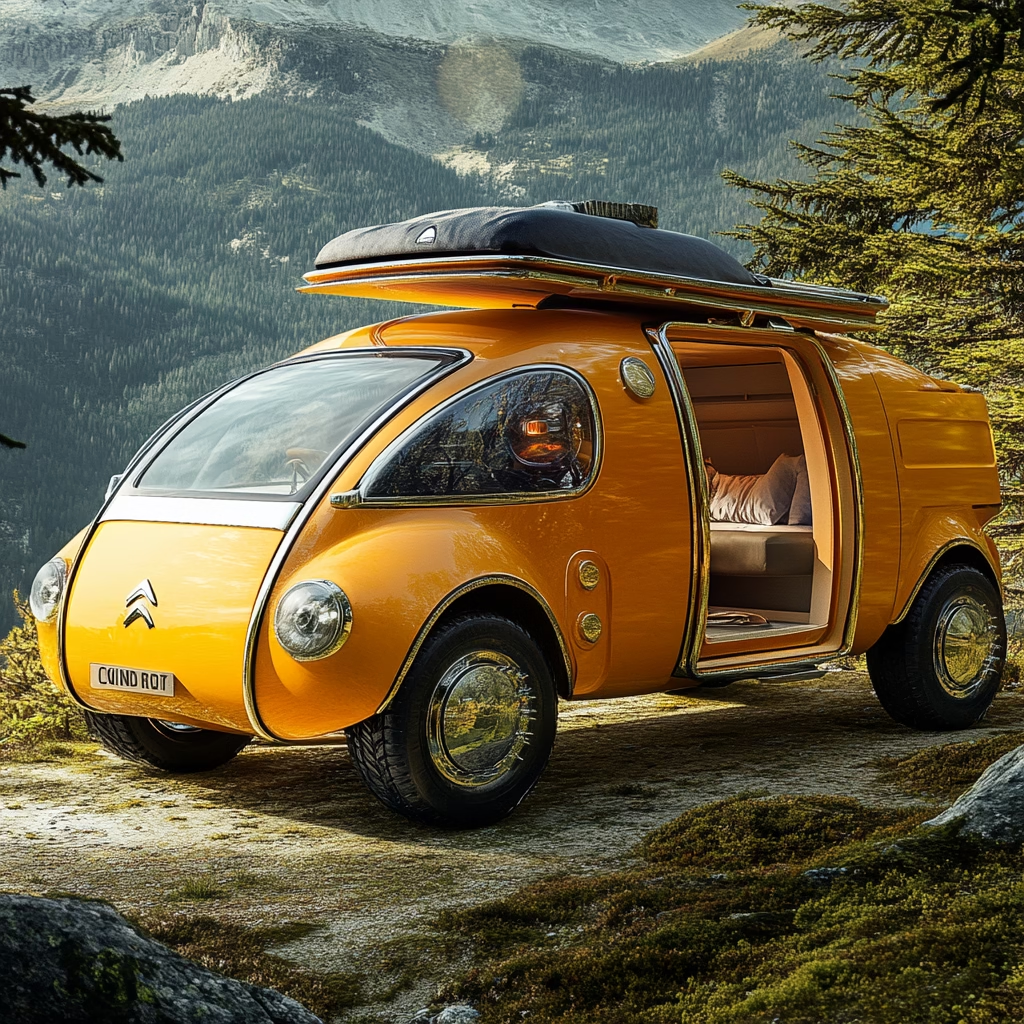
Popular 2CV Camper Conversion Types
The Citroën 2CV Camper comes in several distinct styles, each with its own approach to the camping experience:
The Pop-Top Conversion
Perhaps the most practical 2CV camper style, these vehicles feature a roof that rises to create standing height inside the vehicle when parked. The genius of this design is that it maintains the 2CV’s road profile and handling when driving but expands to create a surprisingly spacious living area when camping.
The Trailer Solution
Some 2CV enthusiasts opt to keep their car mostly original while towing a small camper trailer. This approach preserves the driving experience of the 2CV while providing separate dedicated sleeping quarters. The ultra-lightweight Eriba Puck trailers became particularly popular pairings with the modestly-powered 2CV.
The “Raid” Setup
Inspired by the legendary Paris-Kabul-Paris and other long-distance 2CV rallies, some owners configure their vehicles for self-sufficient adventure travel rather than comfortable camping. These minimalist setups typically feature reinforced suspension, additional storage for supplies, roof racks, and a simple sleeping platform inside.
The Full Interior Conversion
The most comprehensive approach involves completely redesigning the interior of a 2CV van to include essential camping amenities like:
- A compact kitchen area with storage
- A convertible bed/seating arrangement
- Storage solutions for equipment
- Sometimes a portable toilet solution

Why Choose a Citroën 2CV Camper?
In an era of increasingly large and luxurious motorhomes, the appeal of the diminutive 2CV camper might seem puzzling to outsiders. However, this distinctive vehicle offers several compelling advantages:
Unmatched Character
Few camping vehicles turn heads like a 2CV camper. With its distinctive design, cheerful demeanor, and cultural significance, the 2CV camper becomes more than transportation—it’s a conversation starter and a statement about the owner’s approach to travel.
Mechanical Simplicity
One of the 2CV’s most enduring qualities is its mechanical simplicity. With minimal electronics and an engine design that remained largely unchanged for decades, the 2CV can typically be repaired with basic tools and limited technical knowledge—an invaluable quality when venturing far from service centers.
Excellent Fuel Economy
Even by modern standards, the 2CV delivers impressive fuel efficiency, typically achieving around 40-50 mpg (5.9-4.7 L/100km). For budget-conscious campers covering long distances, this efficiency translates to significant savings.
Community and Support
2CV owners benefit from one of the most enthusiastic and supportive automotive communities in existence. Local clubs, international gatherings, and abundant online resources mean that help, advice, and camaraderie are always available.
Go-Anywhere Capability
Though lacking four-wheel drive, the 2CV’s remarkable suspension, lightweight construction, and narrow profile allow it to navigate surprisingly challenging terrain, opening up camping opportunities that might be inaccessible to larger vehicles.
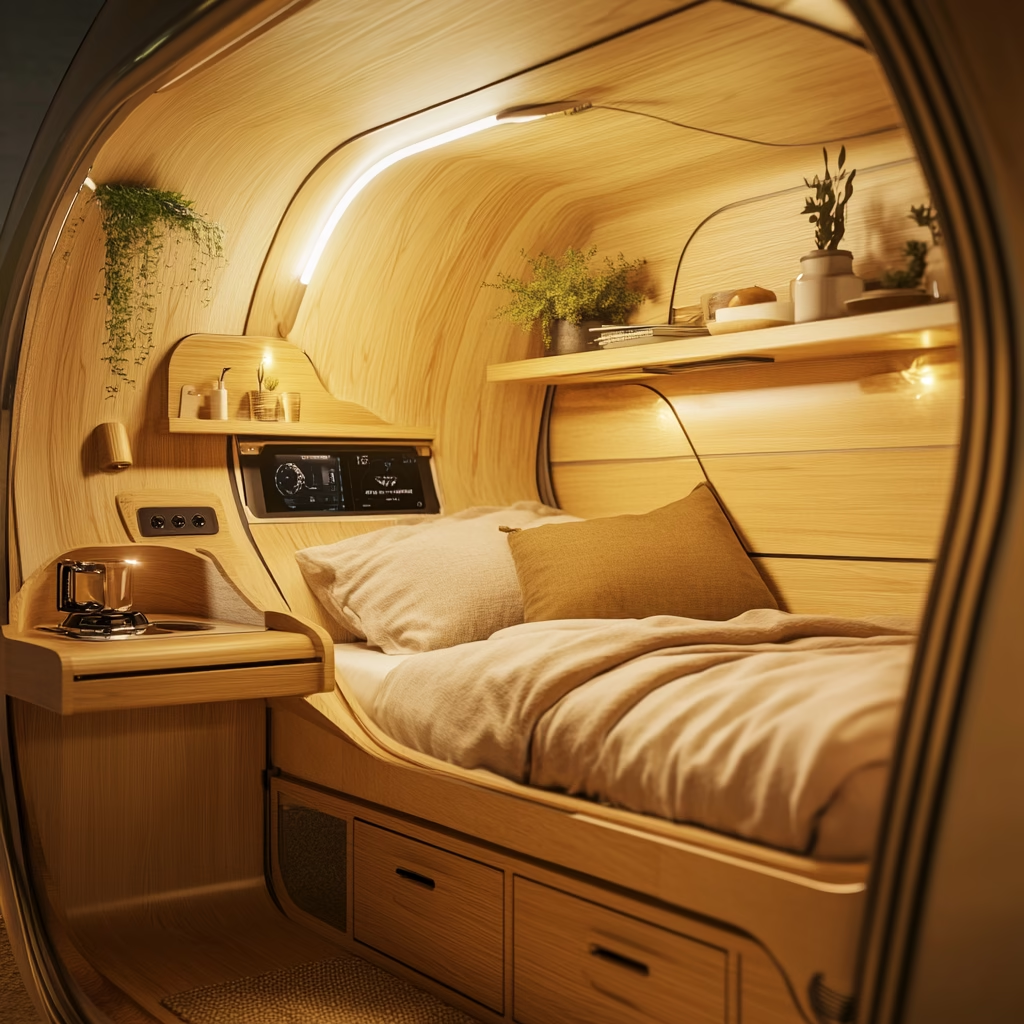
Challenges of 2CV Camper Ownership
Despite their charm, 2CV campers aren’t without their challenges:
Limited Power
With engines typically producing between 12 and 33 horsepower (depending on the year and model), the 2CV is not built for speed. Heavily loaded with camping gear, steep hills can become a genuine challenge, requiring patience and good route planning.
Weather Sensitivity
The 2CV’s lightweight construction and large canvas roof (on standard models) make it more susceptible to crosswinds than heavier vehicles. Careful driving is essential in adverse weather conditions.
Space Constraints
Even the most cleverly designed 2CV camper offers significantly less space than modern purpose-built motorhomes. Camping in a 2CV requires embracing minimalism and careful organization.
Parts Availability
While the 2CV’s production run lasted until 1990, finding certain parts can be challenging, particularly for the less common variants often used for camper conversions.
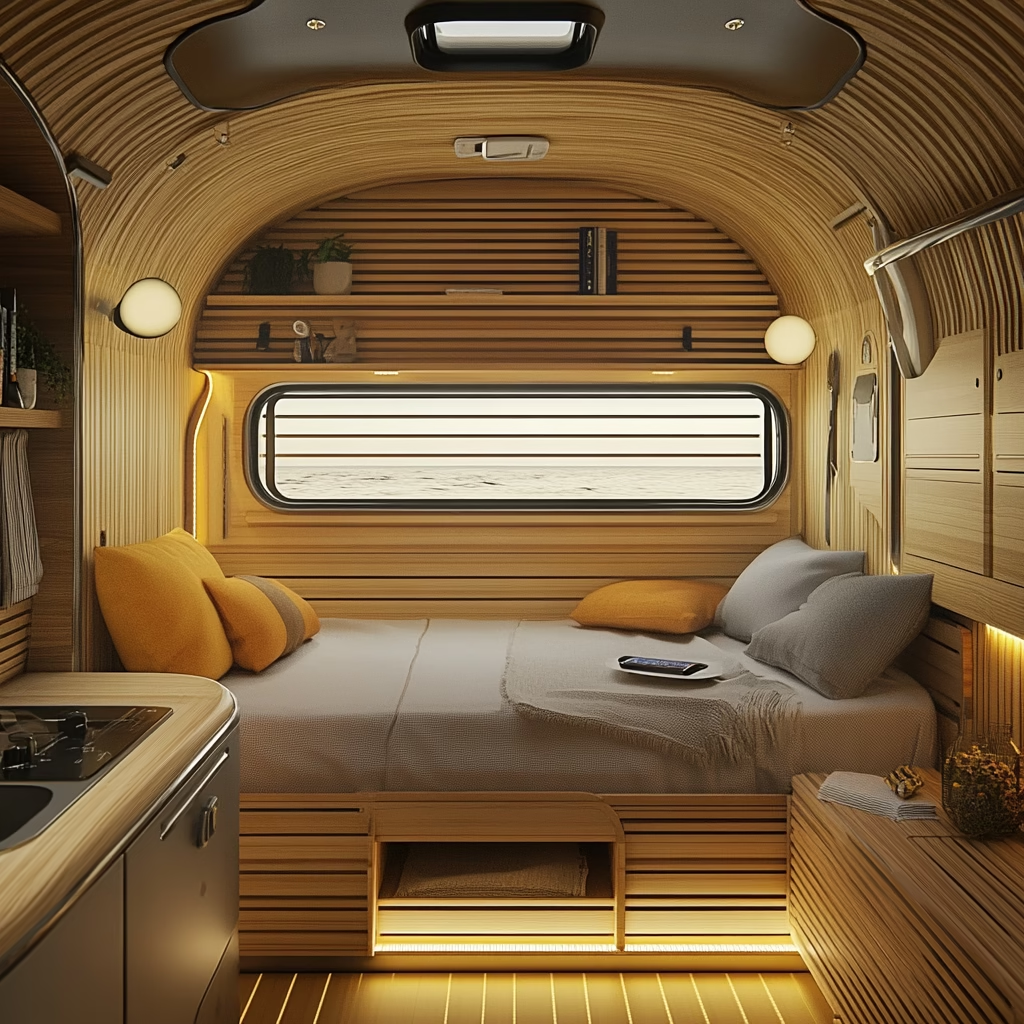
Modern Revival and Growing Interest
Despite production ending over three decades ago, interest in the Citroën 2CV Camper has experienced a remarkable resurgence in recent years. Several factors contribute to this renewed enthusiasm:
The Slow Travel Movement
As travelers increasingly seek authentic, unhurried experiences, the 2CV camper’s leisurely pace and ability to access off-the-beaten-path locations align perfectly with the slow travel philosophy.
Sustainability Concerns
In an age of growing environmental awareness, the 2CV’s minimal resource requirements—both in fuel consumption and materials—appeal to eco-conscious campers.
Nostalgia Factor
For many Europeans, the 2CV evokes fond memories of simpler times and represents an appealing counterpoint to our increasingly complex and digital world.
Investment Potential
Well-maintained 2CV campers have become collectible, with values steadily appreciating. What was once a budget option is increasingly seen as a worthwhile investment that can be enjoyed while potentially growing in value.
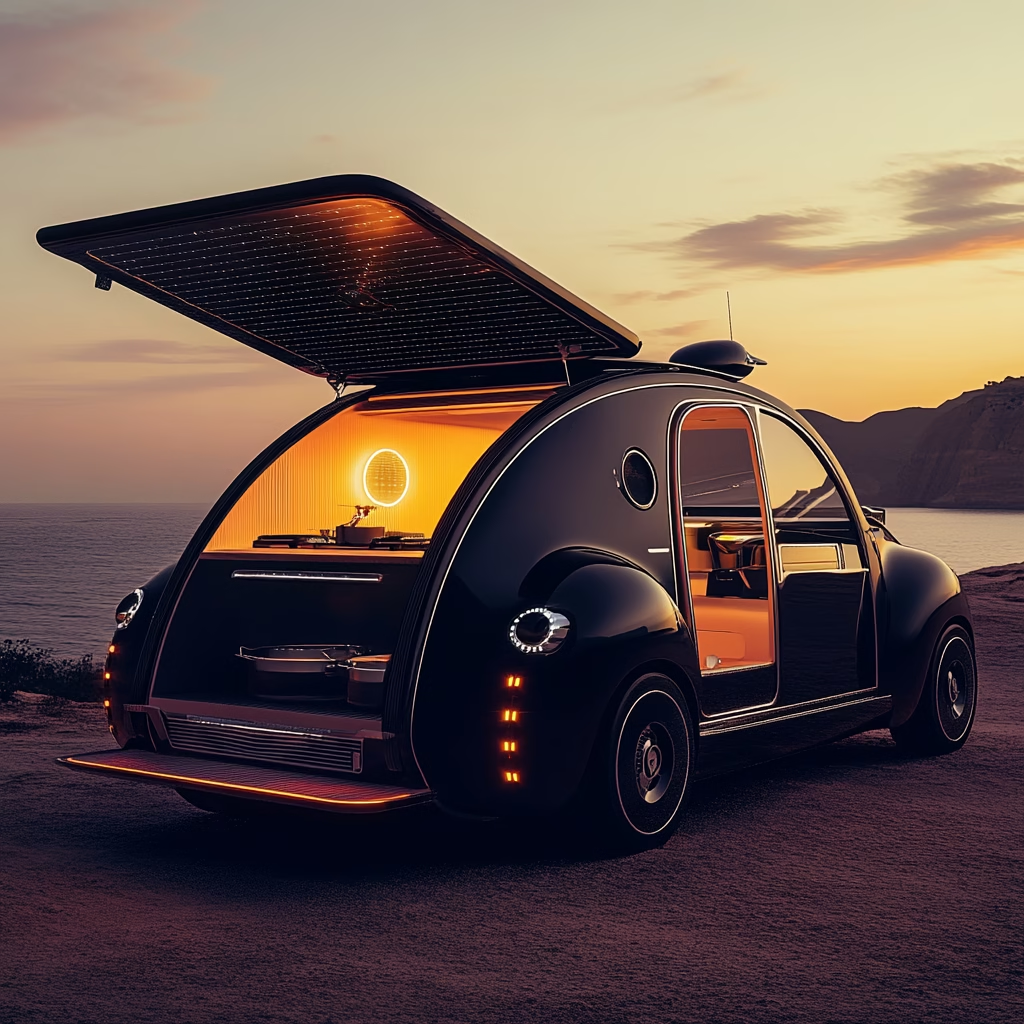
Conclusion: The Enduring Appeal of the Citroën 2CV Camper
The Citroën 2CV Camper occupies a special place in camping culture—a vehicle that represents the perfect fusion of French automotive ingenuity and the freedom of open-road adventure. Its limitations become part of its charm, forcing owners to embrace a more thoughtful, minimalist approach to outdoor living.
In a world increasingly dominated by oversized vehicles and luxury camping accessories, the humble 2CV camper offers something different: an authentic connection to the journey itself. For those willing to slow down and prioritize experience over convenience, this iconic French vehicle continues to offer a uniquely rewarding way to explore the world—one leisurely kilometer at a time.
Whether you’re a dedicated Citroën enthusiast or simply someone intrigued by alternative camping options, the 2CV camper demonstrates that sometimes the most memorable adventures come in the smallest packages.


